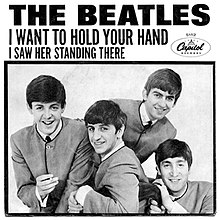Piano Sheets > John Lennon Sheet Music > I Saw Her Standing There (ver. 1) Piano Sheet
I Saw Her Standing There (ver. 1) by John Lennon - Piano Sheets and Free Sheet Music

About the Song
"I Saw Her Standing There" is a song written by John Lennon and Paul McCartney and is the opening track on the The Beatles' debut album Please Please Me, released in the United Kingdom by Parlophone on 22 March 1963.
In December 1963, Capitol Records released the song in the United States as the B-side on the label's first single by The Beatles, "I Want to Hold Your Hand". The single topped the U.S. charts for seven weeks starting 18 January 1964. "I Saw Her Standing There" entered the Billboard Hot 100 on 8 February 1964, remaining there for 11 weeks, peaking at number 14. In 2004, the song was ranked #139 on Rolling Stone's list of the 500 Greatest Songs of All Time.
The song was a Lennon and McCartney collaboration based on McCartney's initial idea.[1] Originally titled "Seventeen", the song was apparently conceived by McCartney whilst driving home from a Beatles concert in Southport,.
Download this sheet!
About the Artist

Random article
All you need to know about free sheet music The Internet has made it possible for piano enthusiasts to learn how to play piano by using free sheet music available online. There are plenty of websites online, which offer you music notes for playing the piano.
Types of formats
There are various formats available when it comes to online music sheets for the piano. These include GIF, Postscript, finale, graphics interchange, adobe acrobat etc. If you want quick and easy access to sheet music piano then these free websites are the best choice available. Most websites will also have listings based on the genre of music to help you easily select the appropriate category of piano notes.
(More...)
